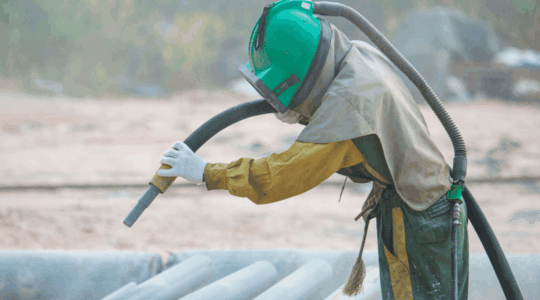Workplace Safety
The Heat Is On: Keep Your Workplace Safe
Understand your safety compliance obligations and the signs of heat-related illnesses to safeguard your employees.
June 5, 2024
Every summer, heat impacts millions of workers. According to the U.S. Bureau of Labor and Statistics, exposure to environmental heat caused the deaths of 40 people each year from 2011 to 2021. Employers should understand their safety compliance obligations and the signs of heat-related illnesses to safeguard their employees.
Compliance and Environmental Heat Risks
The federal government and many states have compliance requirements related to environmental heat risks. For example, OSHA’s National Emphasis Program on outdoor and indoor heat hazards details policies and procedures to protect employees in various industries, such as food manufacturing, chemical manufacturing, vehicle and parts manufacturing, agriculture, construction, warehousing and storage, transportation and delivery services.
Additionally, some states have implemented specific standards around heat hazards:
- California’s standard applies to all outdoor workers in all industries and requires employers to provide training, water, shade and planning with an 80-degree Fahrenheit trigger for requirements.
- Colorado’s standard applies to agricultural work when the temperature is or is forecasted to be at least 80 degrees.
- Minnesota’s standard applies to all indoor places of employment.
- Oregon’s standard applies to all employees who perform work activities, whether indoor or outdoor, where the heat index equals or exceeds 80 degrees.
- Washington’s standard applies to all employees working outdoors. It clarifies that work inside vehicle cabs, sheds, tents or other structures may be considered outdoor environments if engineering controls do not manage the environmental factors affecting temperature.
Hylant’s casualty loss control experts
offer templates, training and other resources to help clients ensure their worksite complies with current heat stress management requirements.
Understanding and Addressing Heat-Related Illnesses
As the saying goes, an ounce of prevention is worth a pound of cure. Some steps that employers and their workers can take to prevent heat-related illnesses include the following:
- In hot and humid environments, workers should wear loose-fitting, lightweight clothing if appropriate for the job.
- Take frequent breaks.
- Stay hydrated. Water and electrolyte products are best.
- Avoid caffeine and alcohol.
- Avoid prolonged periods in direct sunlight.
- Use cooling fans to circulate air, aiding the body’s natural cooling process.
Even if preventive measures are taken, it is important to recognize and respond appropriately to illnesses such as heat cramps, heat exhaustion and heat stroke.
Heat Cramps
Heat cramps are muscular pain and spasms caused by heavy exertion. They are generally thought to be caused by a loss of water and salt through sweating. Heat cramps usually occur during outdoor activities or strenuous activities, but they can occur even when it does not seem very hot or humid.
Signs and symptoms include the following:
- Leg cramps
- Muscle spasms
- Stiff abdomen
- Weak, faint or dizzy
- Possible nausea
- Normal mental status
Steps for addressing heat cramps include the following:
- Move the person to a cooler location.
- Seek medical help if the person loses consciousness.
- Have the person rehydrate (water or electrolyte products).
Heat Exhaustion
Heat exhaustion is caused by fluid loss that results in decreased blood flow to vital organs. As a result of dehydration, victims often complain of flu-like symptoms hours after exposure. Heat exhaustion is serious but not life-threatening if identified and treated properly. Without treatment, heat exhaustion can lead to heat stroke.
Signs and symptoms include the following:
- Cool, moist skin
- Excessive perspiration
- Dilated (large) pupils
- Near-normal body temperature
- Headache
- Weak, dizzy or faint
- Disorientation
- Dark and decreased urine
Steps for addressing heat exhaustion include the following:
- Seek medical attention.
- Move the person to a cool area.
- Lay the person on their back and elevate their feet 8-10 inches.
- If conscious, give the person water every 15 minutes.
- Cool by fanning or spraying the person with cool water.
Heat Stroke
Heat stroke is the most severe type of heat-related illness. It is life-threatening and requires immediate care. Heat stroke occurs when the body’s heat-regulating system fails. Body temperatures rise to a point where brain damage and death may result unless the body is cooled very quickly.
Signs and symptoms include the following:
- Hot, dry skin
- Lack of sweat
- Small pupils
- Confusion
- Possible seizures
- Very high body temperature (can be as high as 105 degrees Fahrenheit)
Steps for addressing heat stroke include the following:
- Call 911 immediately.
- Move the person to a cool area.
- Loosen the person’s clothing.
- Douse the person’s body with water.
- Apply ice packs or wet clothes to the person’s neck, armpits and groin.
Humidity and Heat-Related Illnesses
Don’t overlook the role humidity plays in heat-related illnesses. The human body normally cools itself through perspiration. The water in sweat evaporates and carries heat away from the body.
However, the evaporation rate is reduced when the relative humidity is high. This means heat is removed from the body less efficiently, causing it to retain more heat than it would in dry air. The heat index—sometimes called the “feels like” temperature—is important to know when doing physical work outdoors because higher combinations of heat and humidity can make the body more susceptible to heat-related illnesses.
Plan Your Strategy
Employee safety is paramount. Implement a strategic, compliant safety loss control program now to maintain a healthy workforce this summer.
Related Reading: An OSHA Inspector Just Arrived. Now What?
The above information does not constitute advice. Always contact your insurance broker or trusted advisor for insurance-related questions.


